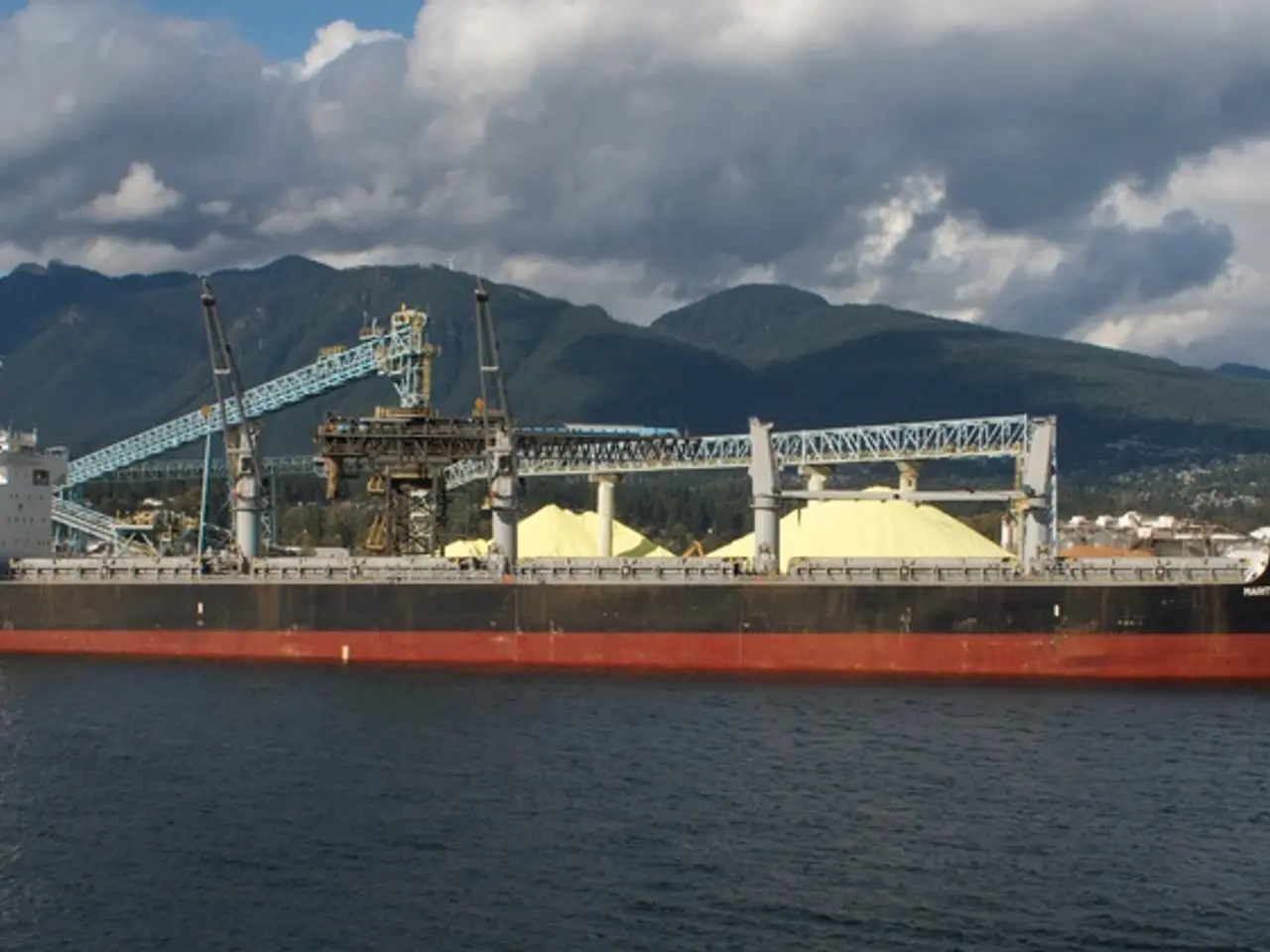SailGP Makes a Splash in Sassnitz, Germany
Racing sans engines: Who necessitates them? - "What's the point of utilizing motors in competition races?"
In the picturesque city of Sassnitz on Rügen, a new sailing race is making waves. The global SailGP championship has made its German debut, bringing high-speed, high-tech racing to the shores of the Baltic Sea.
The event, which was attended by over 26,000 people, features the F50 catamarans, sailing boats that can reach speeds of over 100 km/h. The simplicity of the course requires the boats to go from one mark to the next, turn, and return, making for precise maneuvers that keep the audience on the edge of their seats.
The grandstands along the kilometer-long protective wall by the water were filled for both racing days, with spectators eager to witness the spectacle. The sailing boats stayed in sight, making the sport more tangible and intensifying the action in a confined space.
Martine Grael, the skipper of the Brazilians and one of the highly decorated athletes in SailGP, emphasized teamwork and women's empowerment. Grael, who has ocean hands, a testament to her years of experience with hard rope and saltwater, welcomed the quota for women in SailGP, stating it provides a fair chance for women to prove themselves.
Gender plays hardly any role in the performance of the crew in SailGP, according to Grael. Many of the sailors participating in SailGP have Olympic medals in their pockets, showcasing the calibre of athletes involved. During the premiere in Sassnitz, the participants from Denmark broke the speed record, reaching 103.93 kilometers per hour.
The SailGP is significant for a city with around 10,000 inhabitants, bringing a surge of visitors and attention to the area. The Minister President has confirmed that the SailGP will return to Sassnitz next year, promising more high-speed, high-tech racing on the shores of the Baltic Sea.
SailGP's Technological Innovations
SailGP is at the forefront of integrating technology into sports. Each F50 catamaran is equipped with a vast array of IoT sensors and cameras, capturing 360,000 data points per second. This data is crucial for real-time race analysis. SailGP uses private 5G networks from Ericsson to transmit data from the boats to a central cloud operated by Oracle, ensuring seamless communication and data processing.
SailGP's patented LiveLine production technology overlays live footage with course boundaries, speeds, and positioning data, enhancing viewer experience. While no AI is used directly by teams for strategic decisions, SailGP has incorporated AI-powered race marks and collision avoidance systems. Extended reality technologies also enhance the viewing experience.
By embracing cutting-edge technology, SailGP sets new standards for live sports coverage and fan engagement. The use of remote broadcast production reduces the environmental impact of events by minimizing on-site staff and travel.
While SailGP does not seem to have a direct impact specifically on Sassnitz, Germany, its global reach and technological advancements contribute to promoting sailing as a high-tech sport, potentially inspiring innovation in various locations, including Germany. The championship, launched in 2019, continues to make a splash worldwide, promising a guarantee of repetition.
Community aid could be provided in Sassnitz, Germany, to support local businesses and residents, given the influx of visitors during SailGP events. Vocational training programs could be initiated to develop skilled workforce in advanced technologies like IoT, AI, and 5G, aligning with SailGP's technological innovations.
In Sassnitz, sports-analysis workshops could be organized for young athletes and sports enthusiasts, utilizing SailGP's LiveLine production technology and data monitoring systems, fostering a newly developed interest in sports-related technologies.








